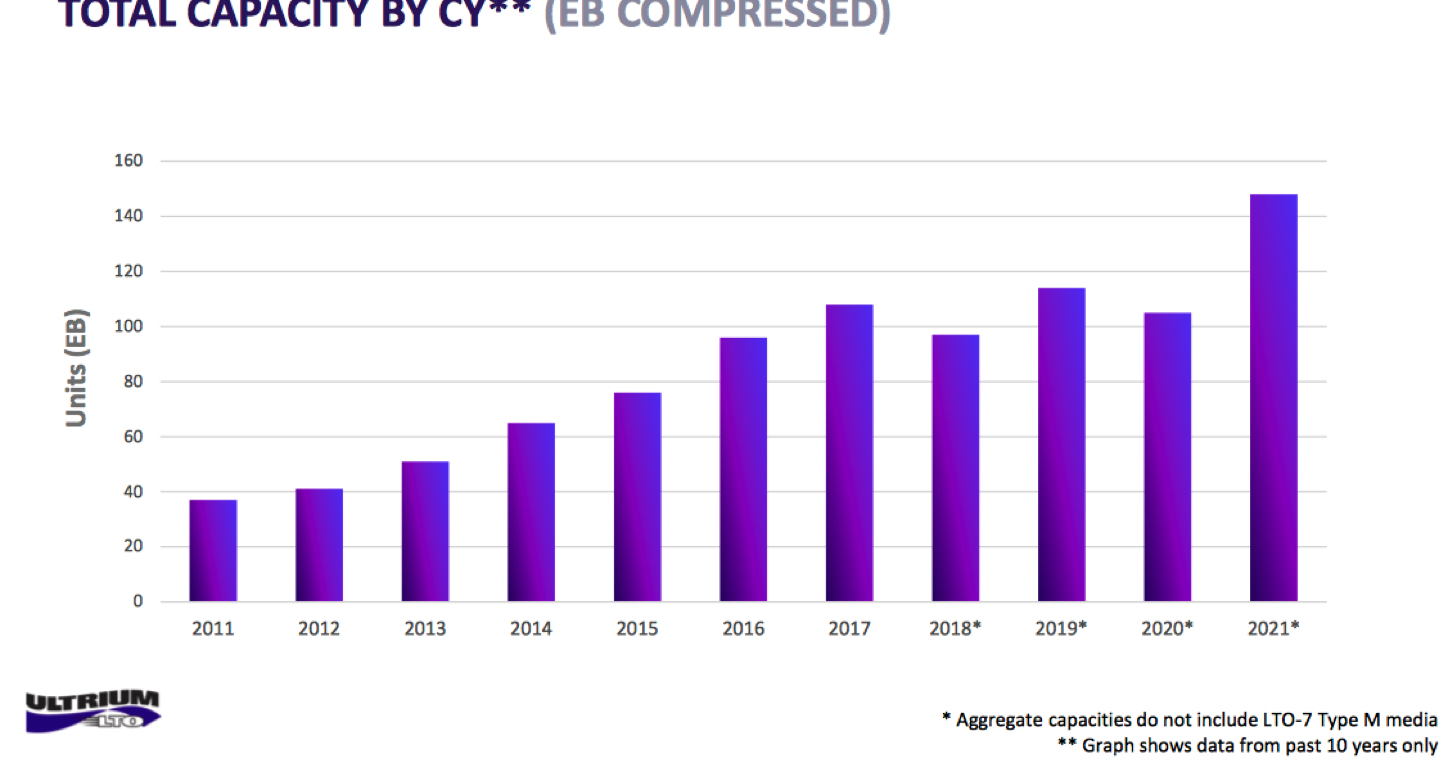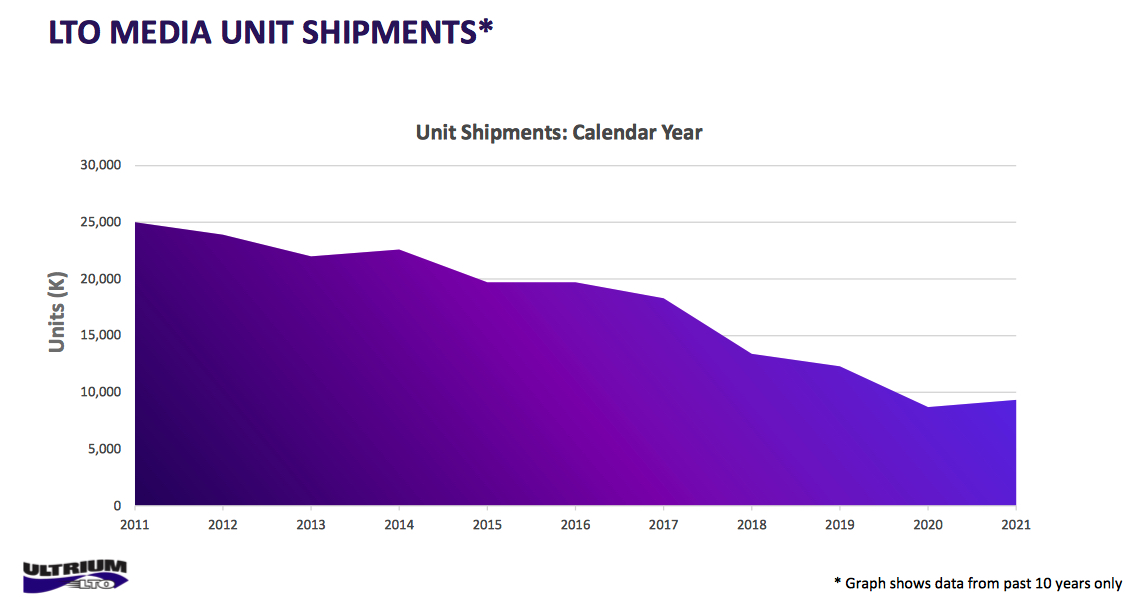148EB of LTO Tape Compressed Capacity Shipped in 2021
Compared to 110EB in 2019 and 105EB in 2020, number of cartridges slightly increasing
This is a Press Release edited by StorageNewsletter.com on April 21, 2022 at 2:02 pmThe LTO Program Technology Provider Companies (TPCs), Hewlett Packard Enterprise Company, IBM Corporation and Quantum Corporation, released their annual tape media shipment report, detailing Y/Y shipments through 4Q21.
The report reveals 148EB of total tape capacity (compressed) shipped in 2021, marking a record year. With a growth rate of 40%, this performance in shipments continues following the previous record-breaking 110EB capacity shipped in 2019 and 105EB of capacity shipped in 2020 (during the pandemic). Report data does not include LTO-7 Type M media capacities.


“Despite the significant business disruptions and uncertainty in 2021, LTO tape capacity shipments achieved the largest increase since 2006, surpassing the previous record set in 2019,” said Patrick Osborne, GM and VP, HPE storage. “We’re continuing to see organizations return to tape technology, seeking out storage solutions that offer high capacity, reliability, long term data archiving and stronger data protection measures, especially as threats to cybersecurity soar.”
As business and technical leaders around the globe continue to monitor new trends in data storage and management, LTO tape technology addresses the massive data growth of mainly unstructured data, with reduced costs. At the same time, this helps with environmental initiatives and sustainability, while ransomware and malware continue to evolve and emerge in ways that no one can predict, making cybersecurity a top concern for organizations. No company or organization can be sure that today’s solutions will meet tomorrow’s threats, however, to offer the best chance against ransomware, organizations are continuing to turn to LTO tape technology for increased data protection, especially as IDC surveys* report that 90% of WW enterprises have experienced ransomware attacks.
Goodwin, P. Proactive Defense Strategies Provide the Best Chance to Defeat Ransomware, IDC, January 2022
Demonstrating itself to be a tool in the fight against cybersecurity, LTO tape technology offers an inherent air-gap, which is essential to denying the physical connectivity criminals need to access, encrypt or delete data. New ransomware trends are also reinforcing the need for organizations to adopt the 3-2-1-1 backup rule, which involves at least 3 copies or versions of data stored on 2 different storage mediums, one of which is off-site and one that is off-line.
“LTO tape is arguably the lowest-cost, simplest method of achieving ransomware recovery best practices,” said Phil Goodwin, research VP, IDC. “Ransomware and malware are threats that will not go away. Magnetic tape is an established, understood, and proven technology that can be an invaluable tool for defeating ransomware.”
Available now, LTO-9 technology, is designed to support increased tape cartridge storage capacity of up to 45TB with 2.5:1 data compression). LTO-9 drives provide backward read and write compatibility with LTO-8 cartridges, as well as many previously introduced features, including multi-layer security support via hardware-based encryption, WORM functionality and support for LTFS.
Comments
Apparently the LTO Program does not read one of its own former press release before publishing a new one.
Here it is announcing 148EB of LTO tape capacity (compressed) shipped in 2021 compared to 110EB in 2019 and 105EB in 2020
Former years, its stated that 114EB (not 110EB) were shipped in 2019.
The former figures released were 108.5PB in 2017, 76EB in 2015, around 80EB in 2011 and 40EB since September 2000.
Unfortunately, the organization now does not revealed the number of LTO drives shipped, probably decreasing as the capacity of tapes inside is regularly increasing.
Only 2 different tape cartridge formats continue to exist: LTO Ultrium pioneered by IBM, and another JD/JZ/JC/JY/JL media up to 10TB, based on linear serpentine 32-channel concurrent recording, also from Big Blue.













 Subscribe to our free daily newsletter
Subscribe to our free daily newsletter


